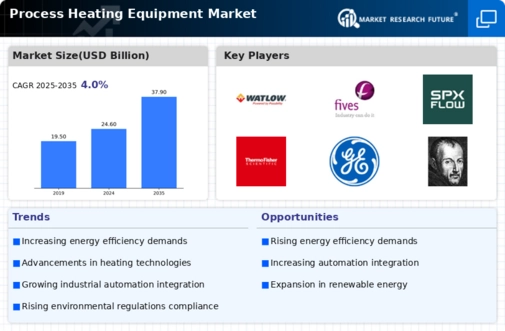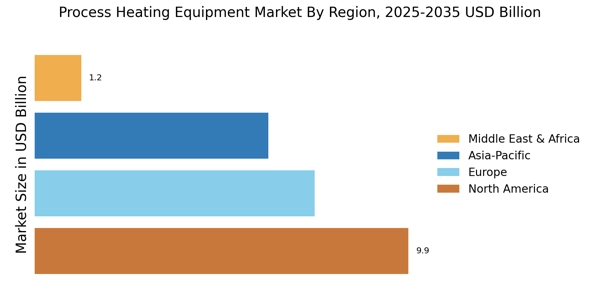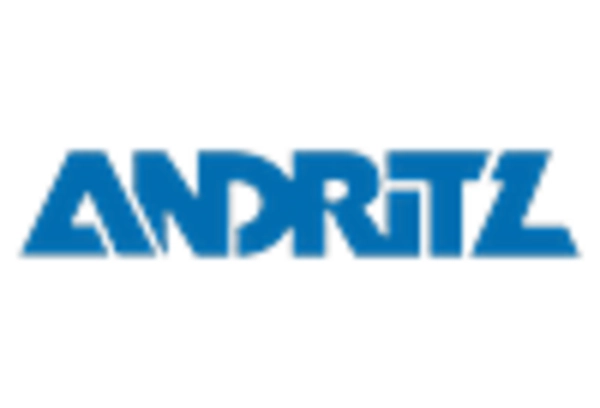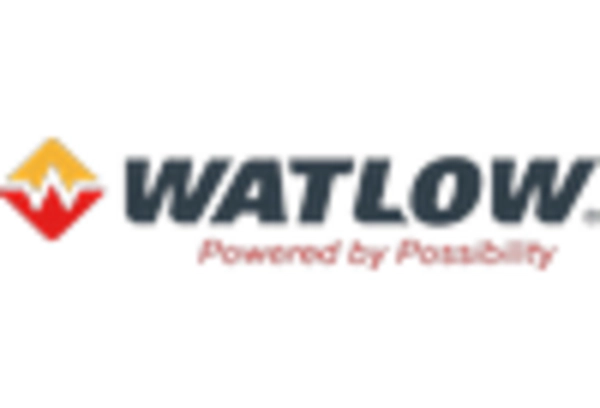Stringent Regulatory Standards
The Process Heating Equipment Market is also shaped by stringent regulatory standards aimed at improving energy efficiency and reducing emissions. Governments across various regions are implementing regulations that mandate the use of energy-efficient heating solutions. This regulatory landscape compels manufacturers to invest in modern process heating technologies that comply with these standards. As a result, there is a growing emphasis on the development of equipment that not only meets performance criteria but also adheres to environmental regulations. This trend is expected to drive innovation and increase the adoption of advanced process heating solutions in various sectors.
Growth in Renewable Energy Sources
The increasing focus on renewable energy sources is influencing the Process Heating Equipment Market. As industries seek to reduce their carbon footprint, there is a shift towards integrating renewable energy solutions into heating processes. This transition is prompting manufacturers to develop process heating equipment that can efficiently utilize alternative energy sources, such as solar and biomass. The market for such equipment is anticipated to expand as companies aim to align with sustainability goals and reduce reliance on fossil fuels. This trend not only supports environmental initiatives but also opens new avenues for growth within the process heating sector.
Expansion of Industrial Applications
The Process Heating Equipment Market is witnessing an expansion in industrial applications, which is driving demand for diverse heating solutions. Sectors such as automotive, aerospace, and textiles are increasingly adopting process heating technologies to enhance production capabilities. The versatility of process heating equipment allows for its application in various stages of manufacturing, from material processing to final product assembly. As industries continue to evolve and diversify, the need for specialized heating solutions is likely to grow, thereby contributing to the overall expansion of the process heating equipment market.
Rising Demand for Process Heating Equipment
The Process Heating Equipment Market is experiencing a notable increase in demand, driven by the expanding manufacturing sector. Industries such as food and beverage, pharmaceuticals, and chemicals are increasingly relying on process heating technologies to enhance production efficiency. According to recent data, the market is projected to grow at a compound annual growth rate of approximately 5.2% over the next few years. This growth is attributed to the need for reliable and efficient heating solutions that can meet stringent regulatory standards. As manufacturers seek to optimize their operations, the adoption of advanced process heating equipment becomes essential, thereby propelling the market forward.
Technological Advancements in Heating Solutions
Technological innovations are significantly influencing the Process Heating Equipment Market. The introduction of advanced heating technologies, such as induction heating and infrared heating, is enhancing the efficiency and effectiveness of heating processes. These technologies not only reduce energy consumption but also improve product quality and consistency. For instance, induction heating systems can achieve rapid heating times, which is particularly beneficial in industries requiring precise temperature control. As these technologies continue to evolve, they are likely to attract more investments, further stimulating market growth and expanding the range of applications for process heating equipment.


















Leave a Comment